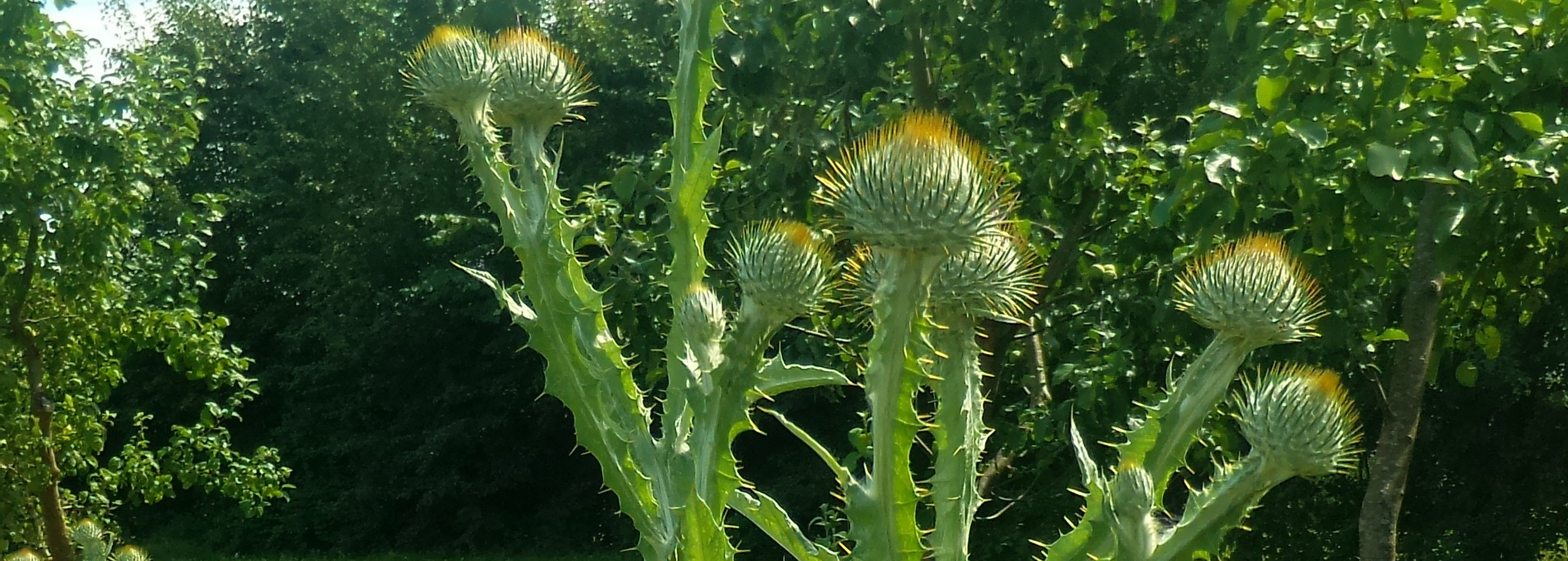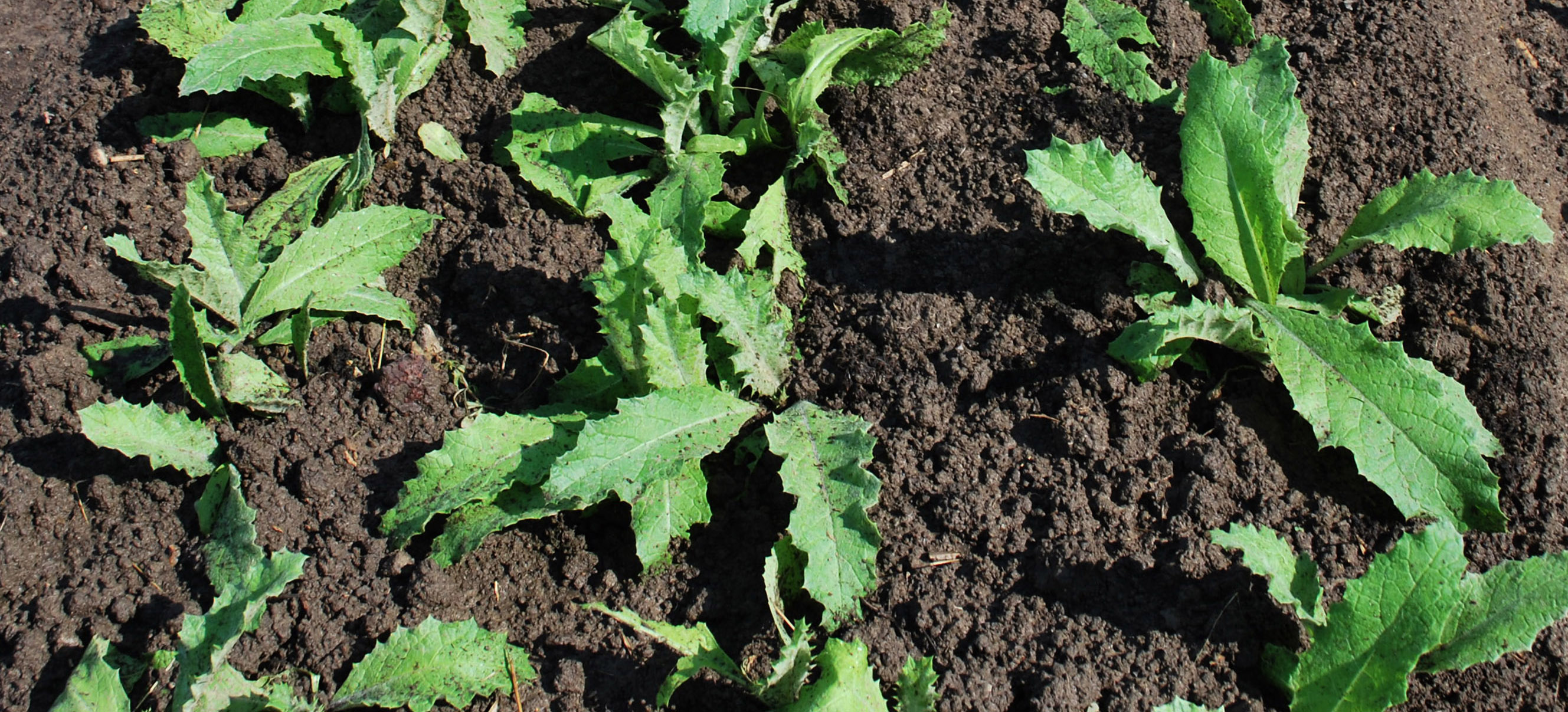
Onopordum acanthium (cotton thistle)
Onopordum acanthium is native to Europe and West Asia but is naturalized in other parts of the world as well. The biennial cotton thistle grows up to 150 cm at a slow rate. The species is bee pollinated and has both female and male organs. This thistle is known to attract wildlife and is self-fertile. It flowers with pink to purple flowers in July to September and the seeds ripen about a month later. The plant can grow in nutritionally poor soils that may be sandy or chalky, and prefer well drained, sunny settings. Both stems and flower buds can be cooked, and the petals can be used as an alternative to saffron, coloring the food yellow. Oil from the seeds have traditionally been used in cooking and as lamp oil. The species has also been used in folk medicine as an anti-inflammatory, anti-tumor and cardiotonic agent.
Cultivation
Sowing in April to May in a tray under light conditions, preferably in greenhouse at 20-23° C. Initially tray substrate should be used, cover the seeds to a depth of 0.5 cm. Probably some seeds will germinate, and others will not. For the ones that doesn’t germinate at room temperature, try a cooling period in fridge for one month and put the tray back in room temperature for germination.
Family: Asteraceae
Swedish: ulltistel
Finnish: sitruunamelissa
Norwegian: eseltistel
Danish: æselfoder
Icelandic: okakruunuohdake

The plant can grow in nutritionally poor soils that may be sandy or chalky, and prefer well drained, sunny settings.
When large enough to handle, transplant the plants into small individual pots in pot substrate. The pots can be placed in an unheated greenhouse, or outside when the risk of frost is over. When fully rooted in the pots, plant outside in field. Cotton thistle grows very well in normal to dry soil and sunny settings. The seeds will ripen in August/September the second year. Always harvest in dry conditions. Harvest when both the inflorescence and the stem underneath is brownish and dry. Due to an extended flowering period, seeds can mature gradually and unevenly.
